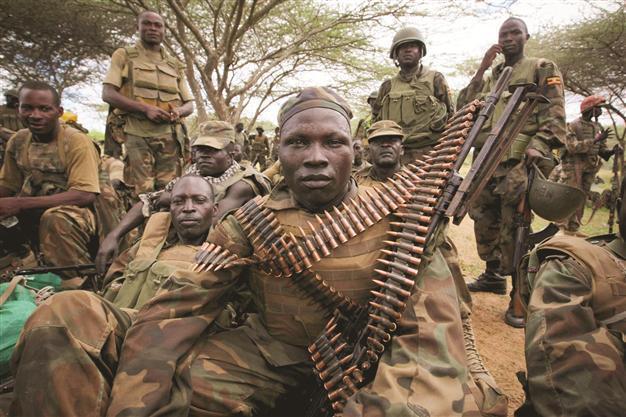A timeline of almost uninterrupted unrest in war-stricken Somalia
MOGADISHU - Agence France-Presse

Below is a timeline of 21 years of almost uninterrupted conflict in the Horn of Africa nation of Somalia, which has been battered by a civil war since the fall of President Mohammed Siad Barre in 1991.
Since then, the country has been fragmented and without an effective government. The chaotic situation has led to the emergence of rival militia forces and warlords who control parts of the territory.
At least 400,000 people have been killed since the start of the conflict.
1991: President Mohammed Siad Barre, in power since 1969, is deposed by rebels and flees the country. Full scale civil war erupts.
1992-1995: The international community intervene in a bid to end a major famine and restore peace but the United Nations’ mission ends in failure.
2000: A national transitional parliament is appointed at talks in Djibouti. Most of warlords boycott it.
2001: After the September 11 attacks in the United States, Somalia, which is suspected of becoming a haven for al-Qaeda, is placed under close international surveillance.
2006: Ethiopian troops in a U.S.-backed invasion topple the Islamic Courts Union -- who had restored relative calm during their six months rule -- sparking a bloody insurgency.
March 2007: The first Ugandan units of an African Union force arrive in Mogadishu to protect Somalia’s transitional federal government.
January 2009: Ethiopia completes a withdrawal. Sharif Sheikh Ahmed becomes president of the transitional administration.
2010: The insurgent al-Shabaab movement proclaims its allegiance to then al-Qaeda chief Osama bin Laden.
Al-Shabaab claim responsibility for a double attack in the Ugandan capital Kampala, in which 76 died, in retaliation for Uganda’s role in the AU force.
October 2011: Kenya invades southern Somalia in a land and air offensive. Ethiopia sends troops back in weeks later and AU forces step up their operations in Mogadishu, increasing pressure on the al-Shabaab from multiple fronts.
September 2011: Somalia’s disparate leaders agree on the basic structure of a new parliament and government to replace the fragile transitional body.
February 2012: Truckloads of Ethiopian and
Somali troops capture the strategic Somali city of Baidoa from al-Shabaab insurgents.
International powers meeting in London pledge to boost aid for Somalia to tackle militancy, piracy and political instability.
May 25, 2012: AU and Somali troops capture the key town of Afgoye from the al-Shabaab .
May 30: AU forces enter the southern Somali town of Afmadow, opening up the road towards the key Shebab-held port of
Kismayo, one of the few remaining major towns held by the insurgents.
 Below is a timeline of 21 years of almost uninterrupted conflict in the Horn of Africa nation of Somalia, which has been battered by a civil war since the fall of President Mohammed Siad Barre in 1991.
Below is a timeline of 21 years of almost uninterrupted conflict in the Horn of Africa nation of Somalia, which has been battered by a civil war since the fall of President Mohammed Siad Barre in 1991.